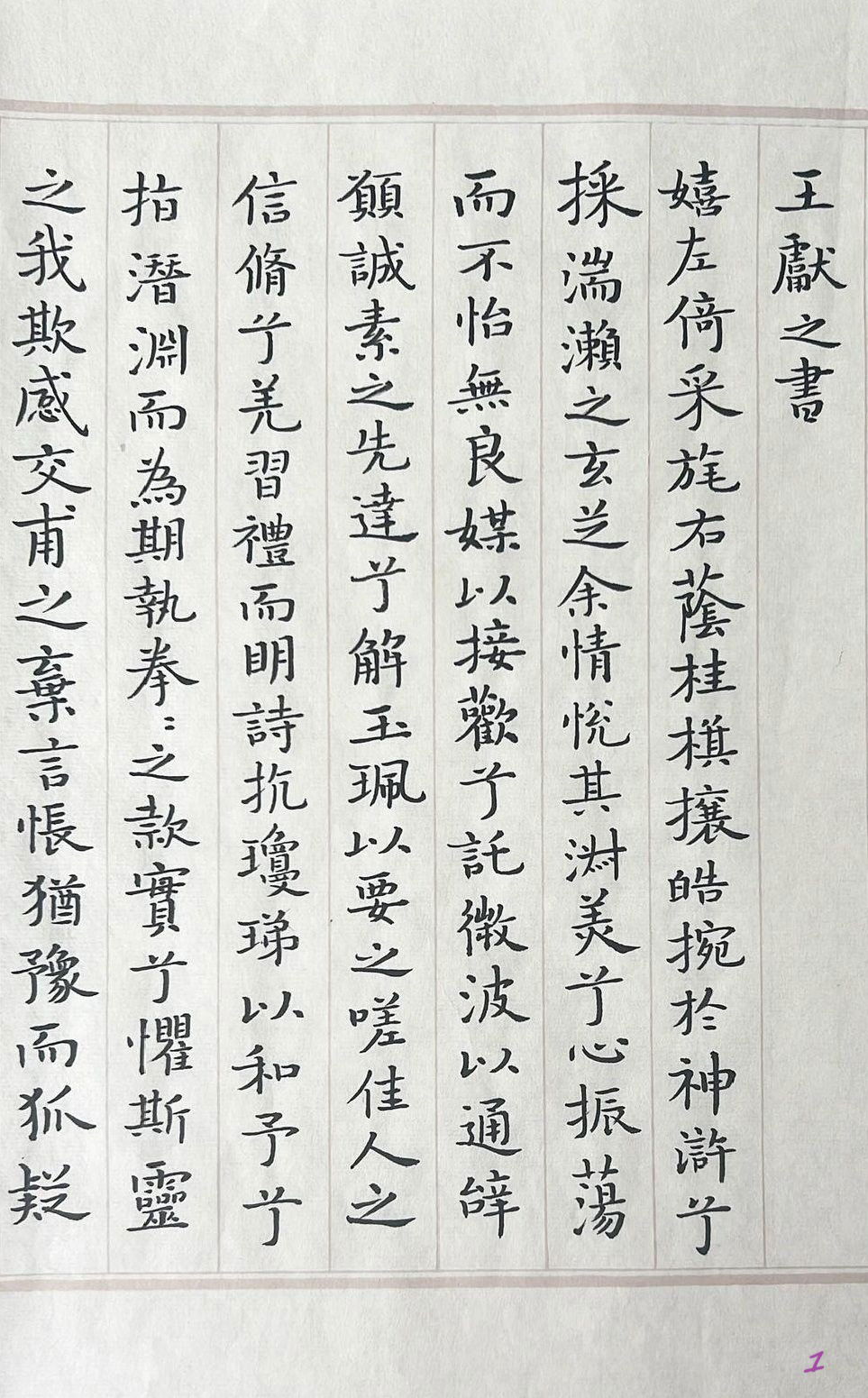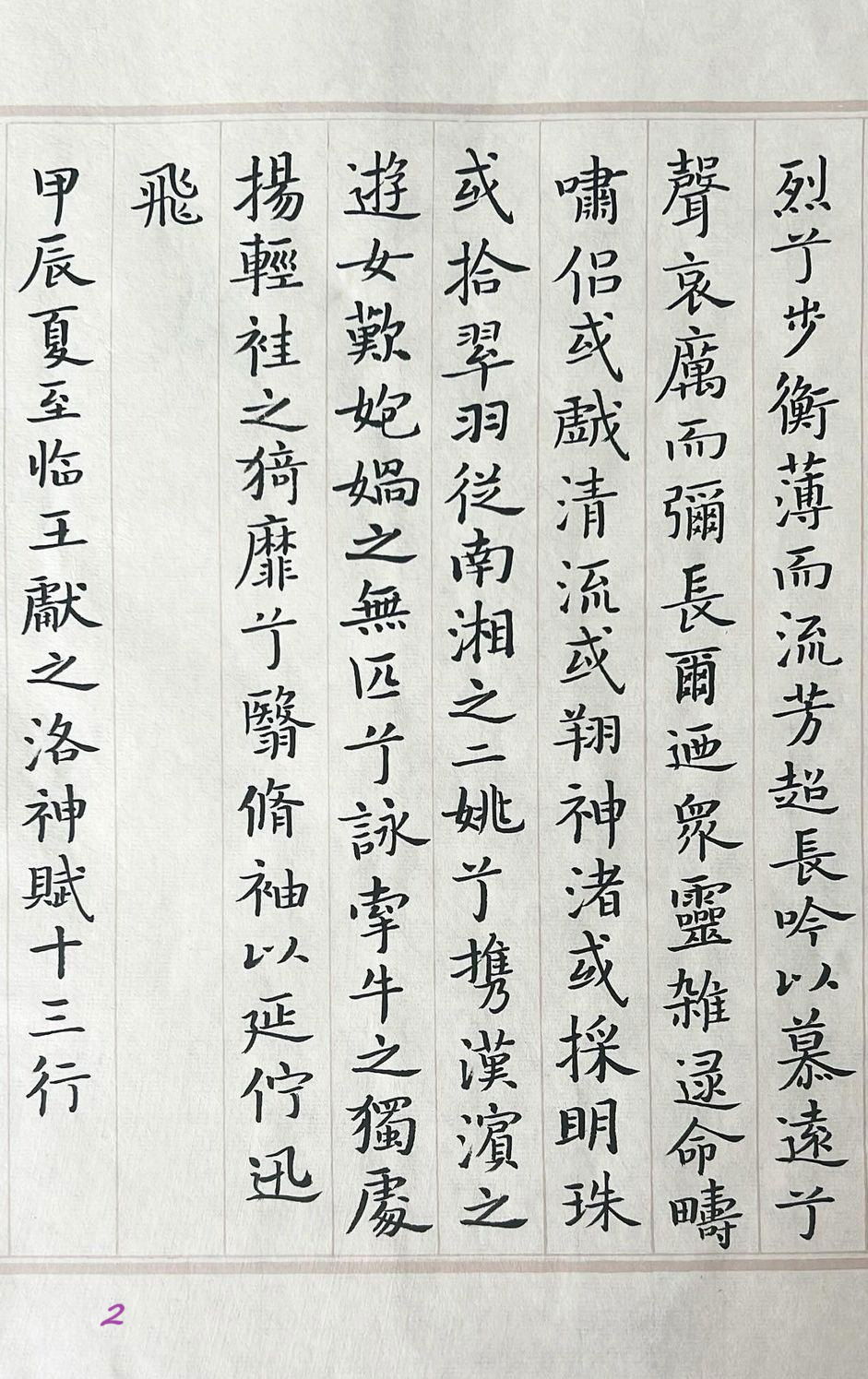Personal calligraphic work, using words from “Thirteen verses of Luoshen Fu (洛神賦, goddess of the Luo River).

Personal calligraphic work, based on a few lines from the famous poem “Thirteen verses of Luoshen Fu” (1), written by Cao Zhi (2) and calligraphed almost two centuries later by Wang Xianzhi (3), the great 4th-century Chinese calligrapher. This poem speaks of the natural events that can link gods and men (4). Wang Xianzhi was a particularly gifted scholar and, like his predecessors, was able to write in a variety of calligraphic styles: his handwriting, handed down from generation to generation, includes regular, running and cursive writing. But what Wang Xianzhi can really do is probably not limited to these postures. For he had already mastered the style that would become popular in two centuries' time: Fei Bai (5). So, here I've embarked on a copyist's task, in pure Fei Bai style, with a thin, flat brush.
The part of the text I have copied can be translated as shown below. It's my own translation, based on my knowledge of Chinese and English. Obviously, several meanings can be found and highlighted, and for my part, I've re-translated it in the style of Western prose, with commas. Be careful, however. Today's “traditional” and “modern” Chinese may have several variants of expressions, some ideograms little known, some forgotten, some maintained only by scholars and the curious (6).


Calligraphy by Wang Xianzhi
I play with my left and right hands in the palm of the Goddess' hand,
And my heart vibrates with beauty before this field of orchids. I'm not afraid of the absence of a good matchmaker to bring me happiness with a woman, because I trust the right vibrations to protect me.
We're not afraid of a good matchmaker to receive you, but of a good vibration to connect you to the world.
I don't believe in the fear of pretty women, just as I believe in teacher training and poetry.
And I want to learn from Qiong zhang about fear of spirits. I am afraid of the spirit of the world, and I am deceived by it.
I walk with my right foot and enjoy the fragrance, and sing long admiring the distant journey ahead.
The sound of mourning lengthens and you paint all the spirits to return to the realm of life and pluck the pearls there.
Storm hitting the clear stream or flying over the sacred islet or picking up the green feathers of the two Yao-ya in Nanxiang and carrying them to the desert shore.
The wandering maiden sighs at the incompetence of the concubine and sings of the solitude of morning glory. She picks up the delicate laurel and cuts off her sleeves to increase her speed, then fly.
Thirteen verses of Luo Shen Fu presented by King Jiachen on the summer solstice.
Embun.
Notes.
1: https://en.wikipedia.org/wiki/Luoshen 洛神賦, goddess of the Luo River. Fu for the holy.
2 : https://en.wikipedia.org/wiki/Cao_Zhi he was a prince, philosopher, poet and one of the greatest scholars of his time.
3 : https://en.wikipedia.org/wiki/Wang_Xianzhi_(calligrapher)
5 : https://www.asianbrushpainter.com/blogs/kb/variants
6: Modern Chinese is fairly easy to speak, since there are only four tones. The most complex part is writing, since you have to memorize the ideograms. With around 2000 ideograms, it's easy to communicate. The Chinese use around 1500 or 3000 modern ideograms on a regular basis. A person embarking on calligraphic and literary studies should master around 15,000, which is a minimum. More complex are the ethnic languages: Cantonese, for example, used by Singaporeans among themselves (between native Chinese).
